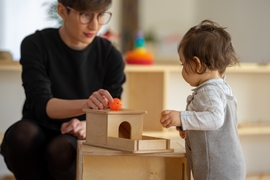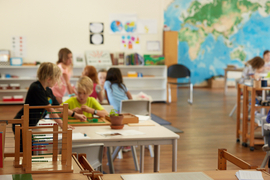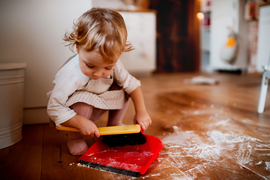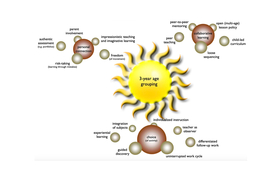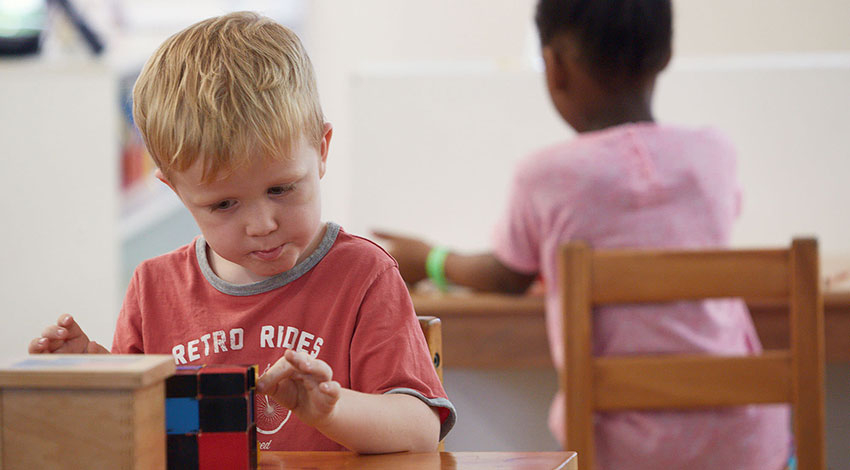
The preparation of each Montessori environment includes the careful preparation of the Montessori developmental materials appropriate to that environment. The Montessori materials are sets of objects, each set designed to exacting specifications. In general the materials are designed to:
- capture interest
- invite interaction and manipulation
- encourage precise use
- extend concentration
- challenge the intellect act as an indirect preparation for future experiences.
Children are shown how to use the materials in concise, but very precise lessons, called presentations. Once children have had a presentation and know how to use a set of materials, they are then free to work with the activities and exercises aligned with those materials as often and for as long as they wish. Many of the materials have an inbuilt control of error, thus enabling children to learn independently with a minimum of adult help. As a result, from an early age, children in Montessori settings build confidence in their own abilities and learn to take responsibility for their own learning.
While many of the presentations used in Montessori environments show children how to use the materials, there are also Montessori presentations that show children how to build skills and knowledge without using materials, for example, lessons in movement, social relations or singing.
There are Montessori materials designed to engage children in all areas of human experience and educational learning, including language and literacy, mathematics, visual and performing arts, music, science, biology, geography and history. The materials embody abstract educational concepts, allowing children to discover these concepts through manipulation, exploration and problem-solving. The result is a deeper understanding and more effective recall of what has been learned. This process is described by Feez (2010: 168), in the context of Montessori early childhood education, in the following way:
Montessori pedagogy is built around sets of objects that ‘materialize’ educational knowledge in a concrete form children can manipulate with their hands. Children are shown how to use the objects and they are given very exact language to talk about the concepts the objects materialize. After the lesson children are free to work with the objects whenever they choose. Because the objects ‘remember’ the concepts in a form children can, literally, ‘grasp’, when children do choose to work with the objects, they are able to do so independently and for extended periods of time. As children grasp and manipulate the objects with their hands, they are learning how to grasp and manipulate the corresponding concepts in their minds.
The Montessori materials are on constant display on open shelves. The materials of each content area are displayed in the sequence they are presented to the children. For this reason, a fully equipped Montessori environment can be said to embody the scope and sequence of the Montessori curriculum for that stage. The children choose from the shelf, at any time, the materials they know how to use. When children are shown how to use the materials, they are also shown how to handle the materials carefully and how to return them to their place once they have finished. Many, though not all, of the materials are designed for individual use, and a common sight in a Montessori early childhood environment is a number of children working with great absorption on individual activities they have chosen themselves, their space and concentration respected by others in their group. As children grow older and make the transition to the primary school, increasingly they work cooperatively on learning activities, research projects, whole-class projects or community projects. Adolescents engage in occupations that reflect the life of the wider society.
